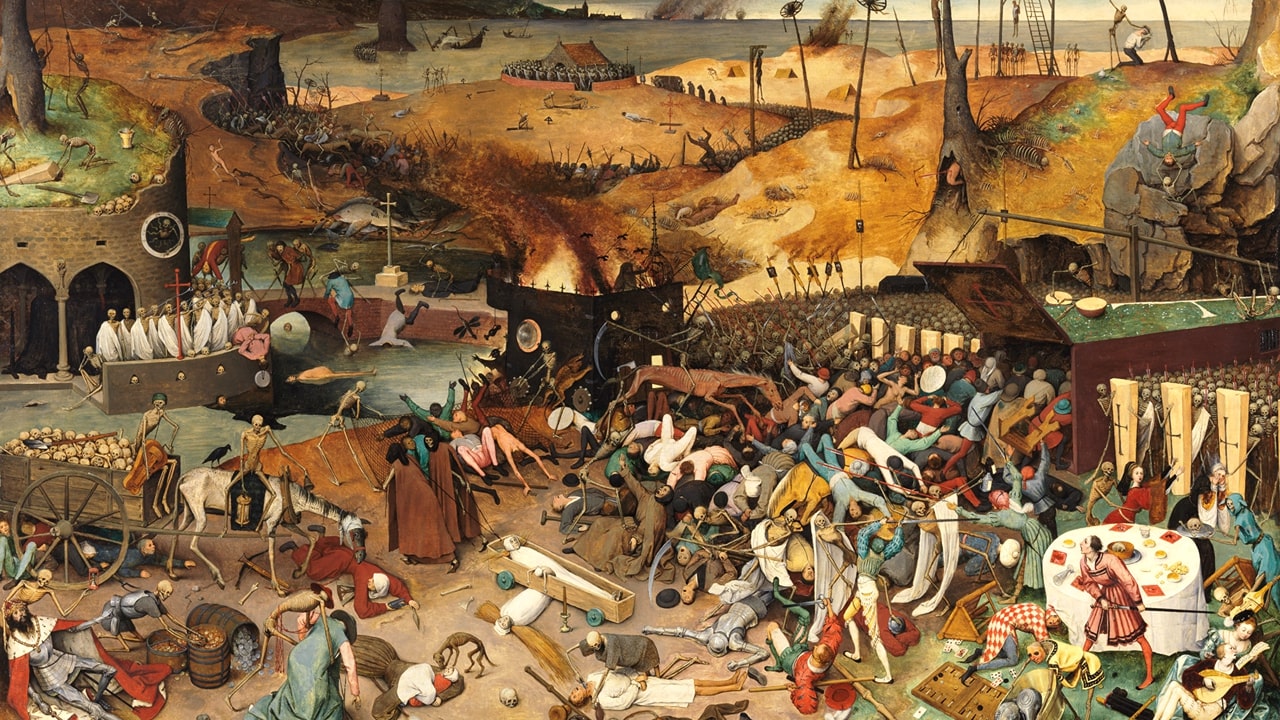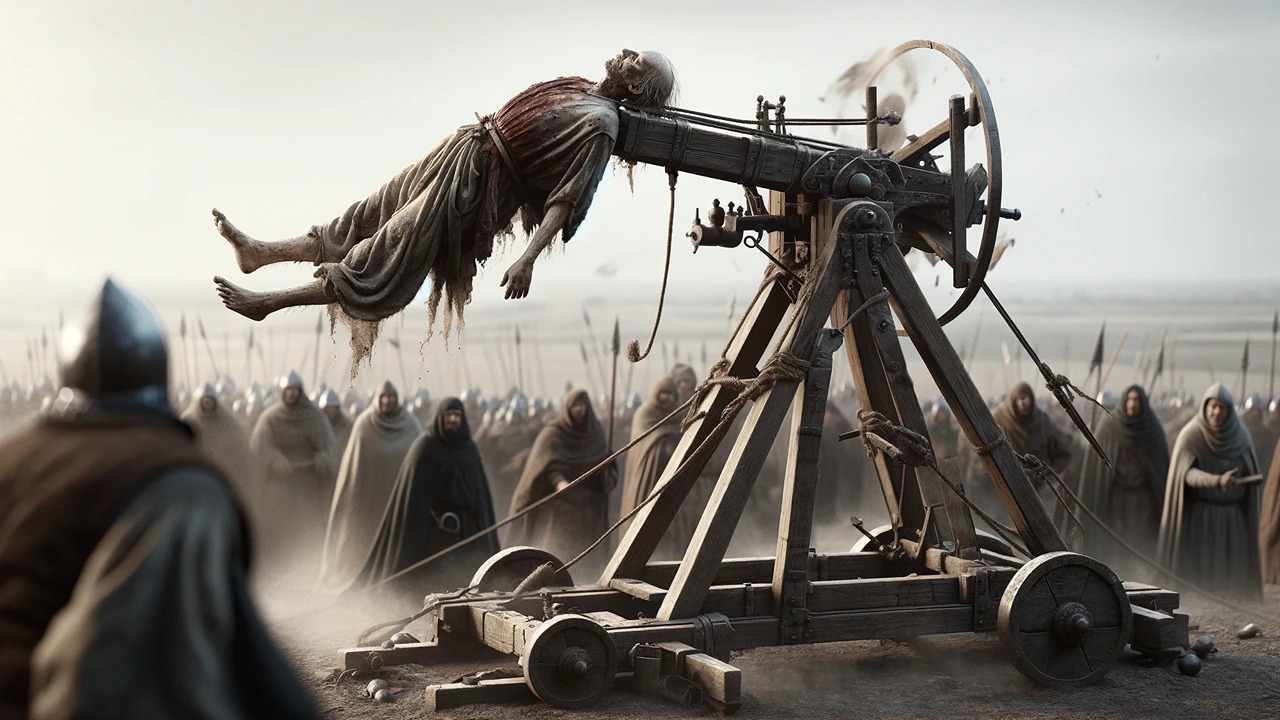We have actually used viruses and bacteria as tools of war for thousands of years. While the spread of viruses was killing people, armies in various periods of history tried to destroy enemy ranks with biological weapons.
In the 14th century, Crimea of the Mongols Attempts to capture Kaffa, a port city on the south coast, resulted in the use of one of the most devastating biological weapons in history: the Black Death.
ravaged the Middle Ages and wiped out the vast majority of Europe’s population. The plague was actually used as a weapon. Well, what if we said that the plague actually first appeared in Crimea and then spread to Europe?
Let’s start from the beginning: The plague was a deadly disease caused by a bacterium called Yersinia pestis.
The plague we all hear about originated in Europe was invented by a 14th-century Italian notary. According to Gabriele de’ Mussi, it emerged in Crimea. and it spread to Europe from there. So, was what we’ve known for years a lie?
No, it wasn’t. The plague, which circulated among rodents and was transmitted to humans through fleas, was also seen in Europe in the Middle Ages. A quarter of Europe’s population disappeared. However, if we focus on the starting point, the claims on this subject are quite confusing.
Who knew that plague would be used as a biological weapon?

The origin of plague, a zoonotic disease caused by the Yersinia pestis bacterium whose main source is wild rodents, is still not fully known. is of eastern origin Even though it is said, many sources that provide this information are not sources that we can base on.
In general, research shows that the epidemic It spread westward from the steppes north of the Black Sea and the Caspian Sea. and its spread into Europe and the Middle East is well documented.
Let’s talk about how the plague spread…
Sources written both in his time and today, It says a lot about the plague. One of these, which we discussed at the beginning, is the writings written by de’ Mussi himself in the 14th century.
“…In 1346, countless Tatars and Saracens in the Eastern countries fell ill with a mysterious disease that led to sudden death. In these countries, vast territories, vast provinces, magnificent kingdoms, cities, towns and settlements, devastated by disease and destroyed by terrible death, were soon deprived of their inhabitants. Tana, located north of Constantinople and frequented by Italian merchants, Eastern settlement under Tatar rule, It was completely abandoned after an incident that led to the Tatar armies gathered in a region here being surrounded and attacked.
After the death of Genghis Khan The Mongol Empire was torn apart by a struggle for control among its successors. The empire was also divided between a number of competing khanates.
One of these khanates expanded to the Crimea region.
These Mongols It is called the “Golden Horde”. In the 13th century, Genoese merchants made an agreement with the leader of the Golden Horde to establish a trade center in Kaffa on the Crimean Peninsula. Over time, this city became an important point of trade between Europe and Central Asia.
The relationship between Mongols and Genoese, It was often tense. Relations became even more tense when the Golden Horde besieged Kaffa in 1307.
While trying to conquer Kaffa, they caught the plague.

Created with artificial intelligence.
During the siege, Canıbeg, the last ruler of the Mongols, carrying the plague-ridden corpses to the enemy’s side with a catapult. It is said that he threw it. This is considered one of the first examples of biological weapons.
It is suggested that this event may have been effective in the emergence of plague in Europe. Just when these events were taking place, the recorded world population was approximately 450 million. But after a few years With the plague epidemic, this number dropped to approximately 350 million.
It is highly likely that the epidemic spread from Kaffa to Europe.

Created with artificial intelligence.
According to Gabriele de’ MussiAmong the sailors who escaped from Kaffa, there were also those who contracted the disease. Some were going to Genoa, some to Venice and other Christian regions. For this reason, it is said that the siege could be the starting point of the plague in Europe.
The claim that the plague came to Italy directly from Crimea Even though it is not true, it seems within the possibilities. This incident is considered the first recorded biological warfare because it is consistent with the technology and descriptions of the period.
Maritime trade from other Crimean ports probably continued throughout this period. Refugees from Kaffa leaving the regionIt can be assumed that it was only a part of the infected ships and caravans.
Despite its historical importance Siege of Shroudis a powerful reminder of the dire consequences that can occur if disease is used as an effective weapon.
Japan’s World War II The use of plague as a weapon during World War II and The huge stocks of yersinia pestis that the Soviets prepared for all-out war, shows that plague still poses a serious threat.
Our other historical content that may interest you:
RELATED NEWS
The Story of the Khwarezmshah State, Which Ruled Central Asia for a Period, and Its Relentless Struggles with the Mongols
RELATED NEWS
The Story of the Mongol Empire, Which Comes to Mind When War Strategy Is Mentioned and Left Its Marks in History Hard to Erase
RELATED NEWS
If Our Ancestors Migrated from Central Asia, Why Aren’t We Turks Slanted-Eyed?
RELATED NEWS
We Explained the Battle of Talas, Where the Turks Met Islam, with Its Cause, Results and Importance
RELATED NEWS
You’ll Get Chills as You Read These Facts About the ‘Black Plague’, the Deadliest Epidemic in Human History!
RELATED NEWS
When you learn the details of the scolding reins that were forced on women in the Middle Ages, you will say that this is not possible!
RELATED NEWS
